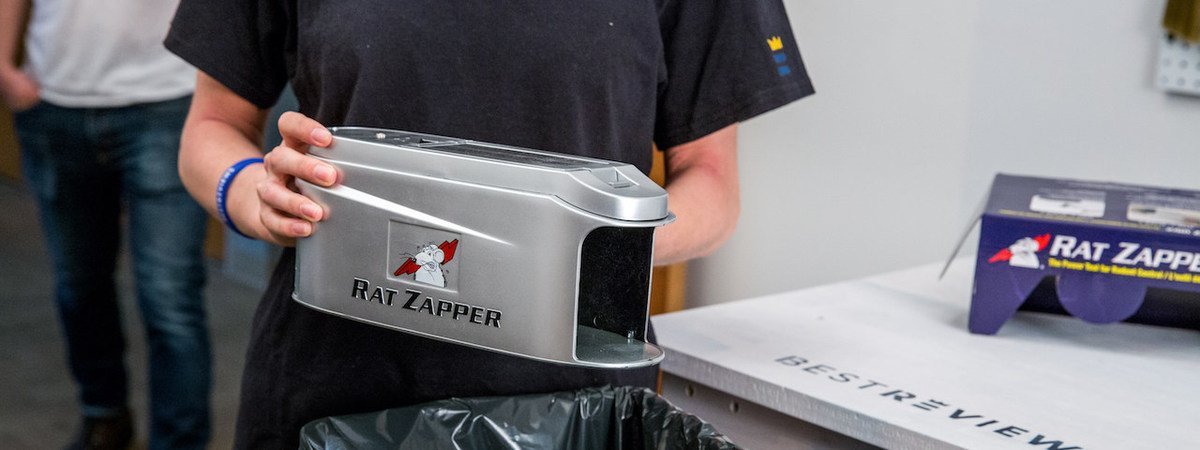
5 Best Mousetraps
Best mousetraps
Unwelcome guests have invaded your home, and you’ve decided to set a mousetrap, but what kind should you get?
How should you bait it, and what will happen once the animal is trapped?
To help you make an informed choice, there are several factors you’ll want to consider.
Common types of mousetraps
The spring-loaded “snap trap”
The cheapest mousetrap is also one of the most common: the snap trap. Snap traps are generally sold in multiples and designed to be disposable. A wooden or plastic base contains a simple spring-loaded device with a bit of bait on one end and a thin metal bar on the other. The bar is held under considerable tension by a centralized spring and a trip wire connected to the bait holder.
Lured by the bait, the mouse crosses the trip wire and the bar snaps shut. This action either breaks the mouse’s neck/spine or pins it down until the user can dispose of the entire trap.
Pros:
- Affordable
- Sold in multiples
- Fits in small, hard-to-reach areas
- Easily disposable
Cons:
- May be unsafe to have around pets and small children
- Occasional false positives (trap sets itself off)
- May be difficult to retrieve from hard-to-reach areas
- Painful demise for animal
- Gruesome clean-up
The glue trap
Another inexpensive method of exterminating mice is the glue trap. A glue trap is a piece of wood or cardboard that is liberally coated with sticky resin and placed in various locations around the home, including pest entry and exit points.
The mouse steps onto the glue trap, which may or may not be baited, and becomes mired in the heavy adhesive. Death is not instantaneous, but owners can dispose of the entire trap without making contact with the animal.
Pros:
- Safer for homes with pets and/or small children
- Rodent death is less gruesome than snap trap
- Also traps invasive insects (silverfish, spiders, ants, cockroaches)
Cons:
- Can be messy
- Resin is difficult to remove from skin and clothing
The live trap
Some people have moral or ethical objections to killing animals. For these folks, a live trap is more appealing.
A live trap is essentially a cage with a collapsible door. When the mouse enters the live trap, the door closes, prohibiting escape. The user then takes the entire cage to a release area and sets the mouse free. This type of trap costs more than some other options, but it can be used again and again.
Pros:
- A more ethical choice for some people
- Owner has option of relocating the animal without harming it
- Can be used repeatedly
Cons:
- Expensive
- Cost may be prohibitive if infestation is large
- User must find a place to release the animal
The electronic trap
Some people don’t mind killing mice, but they have concerns about the methodology used. Snap and glue traps don’t always deliver an instant death blow, resulting in excessive suffering for the animal. For these people, an electronic trap is a more desirable solution.
Attracted to a protein-based bait such as bacon or peanut butter, the mouse enters the trap via a tube. Inside, the creature trips an electrical circuit and receives a powerful shock that dispatches it instantly. The user can then dispose of the remains (without contact), bait the trap again, and reset the unit’s electrical circuit.
Pros:
- Some people consider the high-voltage jolt a more humane form of extermination
- User can dispose of remains without any direct contact
- No need to reset the trap manually
- No moving parts that pose a threat to pets or children
Cons:
- Expensive
- Cheap electronic traps may not deliver a lethal jolt
The bait decision
Few mousetraps work without some form of bait. Protein-based foods work well, but some choices are more effective than others.
Cheese
Many people assume that cheese is the ideal enticement, but research suggests that mice aren’t always attracted to traps baited with cheese. One theory is that people tend to handle the cheese too much during the baiting process, and mice can detect human odors very easily. Whatever food you choose to use, it’s important to handle the bait as little as possible when preparing your mousetrap.
Peanut butter
Peanut butter is one of the hottest mousetrap baits right now. Why? Mice are naturally attracted to nuts and seeds, and the scent of peanut butter suggests both protein and fat to a hungry mouse. Bird seed is also used by some people.
Bacon
Fatty bacon, or even small chunks of jerky, are commonly used in mousetraps with great results. Mice are carnivores, after all.
Other foods
If you don’t have any of the above solutions on hand, consider baiting your trap with a bit of oatmeal, cracker, butter, chocolate, or pet food.
Other baiting tips
- Avoid using “too much” bait. The smaller the amount, the closer the mouse must come to the trap.
- Chemical attractants can also be used to boost the power of organic baits.
- Switching between several different kinds of bait can improve your results, as mice eventually become “nose blind” to the same scent every day.
- Some traps work equally well with or without bait. Because mice have poor vision, they prefer to travel along walls; trap placement is key.
- Some commercial trap manufacturers claim that their product is “pre-baited,” but the effectiveness of these products is questionable.
